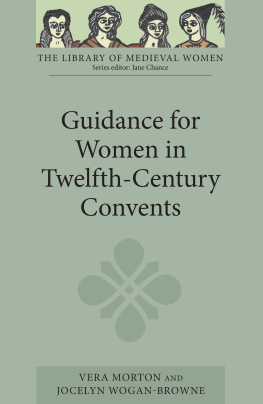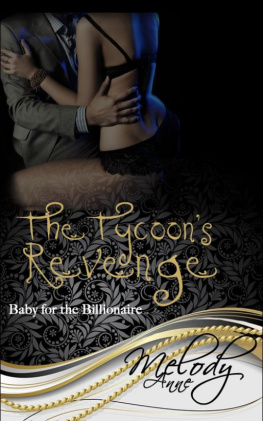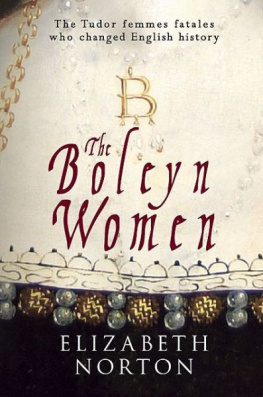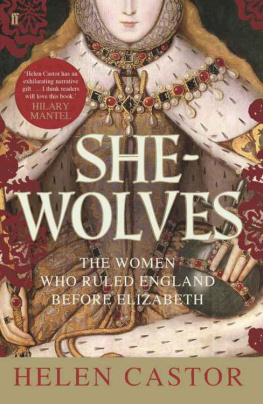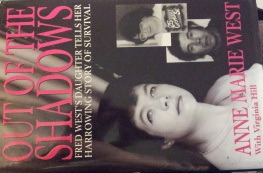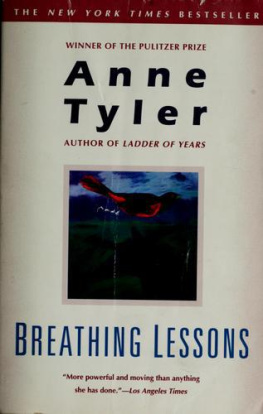
Library of Medieval Women
Anne of France:
Lessons for my Daughter
Anne of France (14611522), daughter of Louis XI and sister of Charles VIII, was one of the most powerful women of her time. As the fifteenth century drew to a close, Anne composed a series of enseignements, lessons, for her daughter Suzanne of Bourbon. These instructions represent a distillation of a lifetimes experience, and are presented through the portrait of an ideal princess to help her negotiate the difficult passage of a woman in the world of politics. The lessons are here translated into English for the first time and accompanied by full introduction, commentary and notes.
Offers explication for non-specialist readers but at the same time provides serious scholarship. [] A thoughtful and informative book which offers a sympathetic reassessment of Anne. RICARDIAN.
Library of Medieval Women | ISSN 13699652 |
Series Editor: Jane Chance
The Library of Medieval Women aims to make available, in an English translation, significant works by, for, and about medieval women, from the age of the Church Fathers to the sixteenth century. The series encompasses many forms of writing, from poetry, visions, biography and autobiography, and letters to sermons, treatises and encyclopedias; the subject matter is equally diverse: theology and mysticism, classical mythology, medicine and science, history, hagiography, and instructions for anchoresses. Each text is presented with an introduction setting the material in context and a guide to further reading.
We welcome suggestions for future titles in the series. Proposals or queries may be sent directly to the editor or publisher at the addresses given below; all submissions will receive prompt and informed consideration.
Professor Jane Chance. E-mail:
Boydell & Brewer Limited, PO Box 9, Woodbridge, Suffolk, IP12 3DF, UK. E-mail:
Previously published titles in this series appear at the back of this book

For my dear friend Georgina Burlingame, with my deepest appreciation for the years of friendship we have shared. As Anne of France says, in prosperity you will find friends enough, but in adversity, few.
Preface
In A Room of Ones Own , Virginia Woolf suggested that we think back through our mothers if we are women. I found myself remembering her words as I began translating Anne of Frances lessons for her daughter, Suzanne of Bourbon. The process was a strangely intimate one: slowly, word by word, sometimes even letter by letter, I was deciphering the admonitions, advice, and warnings a fifteenth-century princess directed to her daughter, all the while and against all logic hearing my own mothers voice in my mind. And then one day, midway through the process of turning French into English, I looked away from my pile of dictionaries to the framed portraits of Anne and Suzanne that sat on the desk where I was working. Studying their faces, I knew I had to find the quotation that I remembered.
I did find it, about three-quarters of the way through the slim volume, as Woolf was describing the struggle of women writers. Although they were confronted by discouragement and criticism, Woolf wrote, that was unimportant compared with the other difficulty which faced them when they came to set their thoughts on paperthat is that they had no tradition behind them, or one so short and partial that it was of little help. And then the sentence: For we think back through our mothers if we are women.
Anne of Frances text seems at first to challenge Woolfs claim, for in composing a series of lessons for her daughter, Anne did have a tradition of women behind her, and a rather long one. As she wrote, she could think back to Christine de Pizans The Treasure of the City of Ladies , written a hundred years earlier, a book that Anne had owned and read, a book that, in fact, she had inherited from her mother, Charlotte of Savoy, queen of France. And, although Anne addressed her lessons to her daughter, she clearly came to see herself contributing to the tradition she inherited, since her book was passed on to other daughters of other mothers: her lessons were published at the request of Suzanne, doubtless with her mothers approval.
But, despite the status of Anne of France and her daughter Suzanne, and despite the fact that the book went through three editions within thirty years of its composition, her work disappeared. The tradition she had inherited was also lostChristine de Pizans Treasure of the City of Ladies , composed in 1405 and widely circulated in manuscript, was printed in Paris in 1497, 1503, and 1536, but, in the words of Sarah Lawson, who published the first translation of Christines work in English, by the seventeenth century hardly anyone had heard of her.
We almost surely would not be able to think back to Annes text today were it not for the work of one man, a nineteenth-century scholar named A. M. Chazaud.
While he does not tell us how he came to edit Annes text, Chazaud does explain how the book that Anne had given her daughter came to be in Russia, for the manuscript he found there was, in fact, Suzannes own copy of the book: Ce livre est moy, Susanne de Bourbon, et ley eu de la meson de Bourbon was written on the first folio.
And there it remained, at least for a time. The few scholars who have written about Annes text have assumed that the manuscript is still there, preserved for us, waiting for us to pick it up and touch the very pages that Suzanne turned as she read her mothers words.
And so, in the end, Anne of Frances book seems to illustrate rather than to challenge Woolfs view that the tradition women have inherited is a fragmented and disrupted one. Like so many medieval texts, the survival of her work seems entirely a matter of chancepassed from hand to hand, the manuscript copy of her lessons also passed through more than four centuries of disaster, war, and revolution, only to be sold and then to disappear. And yet, despite the odds, her text did surviveone copy of the first printed edition, one of the second, two of the third, and, luckily, a careful edition of the manuscript itself, made before its disappearance. Chazauds 1878 edition, which itself survives in only a handful of copies, was reprinted in 1978, ensuring that Annes lessons could be passed on to a generation of scholars intent on recovering womens history and enabling them, in Woolfs words, to begin rewriting the short and partial tradition they inherited. From Anne of France to Suzanne of Bourbon to Diane de Poitiers to Catherine the Great to us.
We have also inherited a tradition of scholarly work on this text, from Chazaud himself in the nineteenth century, to Alice Hentsch and Joseph Viple early in the twentieth, to Colette Winn and Diane Bornstein in the 1980s, and then to Charity Cannon Willard and Roberta Krueger in the 1990s.
I first learned of Anne of Frances text from Constance Jordans Renaissance Feminism: Literary Texts and Political Models . Jordans brief but intriguing analysis of Annes lessons sent me first to Chazaud and led, ultimately, to the edition printed here as part of Boydell and Brewers Library of Medieval Women. I would like to thank those who have helped make this edition possible, particularly Jane Chance, the series editor; Caroline Palmer, editorial director at Boydell and Brewer; and the unnamed reader whose comments on a draft of this book were very helpful. For their time and attention as I attempted to locate Anne of Frances manuscript and the sixteenth-century editions, I would also like to thank A. P. Romanov of the National Library of Russia; Marie-Elisabeth Boutroue of the Institut de Recherche et dHistoire des Textes, Centre Nationale de la Recherche, France; and, especially, Nicolas Petit, Conservateur la Rserve des livres rares, Bibliothque nationale de France. Closer to home, I would not have been able to complete this project without the help of Sue Golden, Inter-Library Loan Coordinator of the Mortvedt Library. And I owe a special debt of thanks to my dear friend Tom Campbell and to my son, Kristian Jansen Jaech, both of whom probably heard more about Anne of France and her lessons than they wanted to, but who listened nevertheless.
Next page
